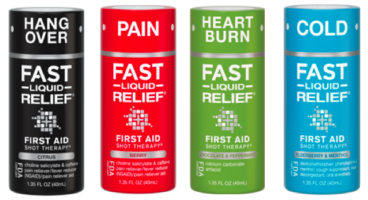Posted by Senopsys on January 13, 2024

A neighbor slipped and fell in his driveway. He was unable to get up and was taken to the hospital by ambulance. Before medical treatment could be initiated, the hospital needed to run diagnostic tests, e.g., x-ray, MRI. The same is true for developing palatable formulations – it’s not enough to know that it tastes “yucky” as there’s no universal “yummy” excipient.
Read More
Posted by Senopsys on May 28, 2022

It is widely recognized that young children cannot swallow traditional tablets, but difficulty in swallowing tablets (dysphagia) is not limited to children. An estimated 40% of adults report difficulty in swallowing tablets, which is increasingly common among older patients. How can the formulation scientist address these important patient needs, and how can “swallowability” even be quantitatively measured?
Read More
Posted by Senopsys on May 5, 2019

An estimated 80% of new drug actives are classified as poorly soluble. There are a number of approaches for enhancing solubility – alternative salt forms, particle size reduction and solubility-enhancing excipients, among others. Like APIs, many excipients are known to be bitter or have other aversive sensory attributes including aromatic off-notes (malodor) and trigeminal irritation (e.g., tongue sting and mouth or throat burn). In some cases, the taste masking challenge of the excipient system can be greater than for the API itself.
Read More
Posted by Senopsys on February 4, 2019

Listerine® PocketPaks® – the postage stamp-size strips that melt in your mouth – became an instant hit after their market debut with more than 100 million units sold. Named a “Best Innovation” by Time Magazine, audiences and critics raved about their portability and ability to take without water. Not only did Listerine PocketPaks create a popular sensation, they established a new genre for oral drug delivery!
Read More
Posted by Senopsys on January 9, 2018

If you’re a Disney fan of a certain age, you probably can sing the lyrics to Mary Poppins Spoonful of Sugar Makes the Medicine Go Down. Many APIs are known to be bitter, some extremely so. The addition of flavor – orange, grape, berry, chocolate – cannot reduce bitterness as taste and smell have different perception pathways. Rather bitterness is reduced by blending with the complementary basic tastes – sweet, sour and salty – through the mechanism of taste/taste interaction. When properly blended, the result is a neutral tasting (“white”) base in which the basic tastes are not separately perceived.
Read More
Posted by Senopsys on July 3, 2017

Recently, a strange noise from my car required a trip to the mechanic. Before the garage can start repairs, they need to diagnose the problem – is it a worn clutch or an exhaust? The same is true for developing palatable formulations – it’s not enough to know that it tastes “yucky” as there’s no universal “yummy” ingredient.
Read More
Posted by Senopsys on January 27, 2017

Senopsys and First Aid Shot Therapy (FAST) collaborated to improve the taste and consumption experience of common OTC products. This resulted in a series of great tasting, single dose liquid medicine shots that start working in minutes.
Read More
Posted by Senopsys on November 18, 2016

Regulations in the United States and European Union are incentivizing (via pediatric exclusivity) and requiring the development of pediatric medicine. These regulations are designed to ensure that every new drug will be evaluated for use in pediatric patients and studied in this population when appropriate. A key requirement is the submission of detailed plan that outline
Read More
Posted by Senopsys on November 14, 2016

Senopsys and Bristol-Myers Squibb presented results of a process used to develop palatable pediatric chewable tablet formulations for two APIs with different taste masking challenges. Development followed a two-stage design: Stage 1 – Taste Assessment to quantify the taste masking challenge. Stage 2 – Taste Optimization following a sensory-directed formulation development approach. Click here to
Read More
Posted by Senopsys on July 20, 2016

Many Active Pharmaceutical Ingredients (APIs) are bitter, some extremely so. Often a formulator’s first reaction to taste masking is to add a “flavor” to the formulation to mask the bitterness. This approach to taste making is not usually successful because of differences in the physiology of taste and smell. Myth Busted: Taste and Smell are
Read More











